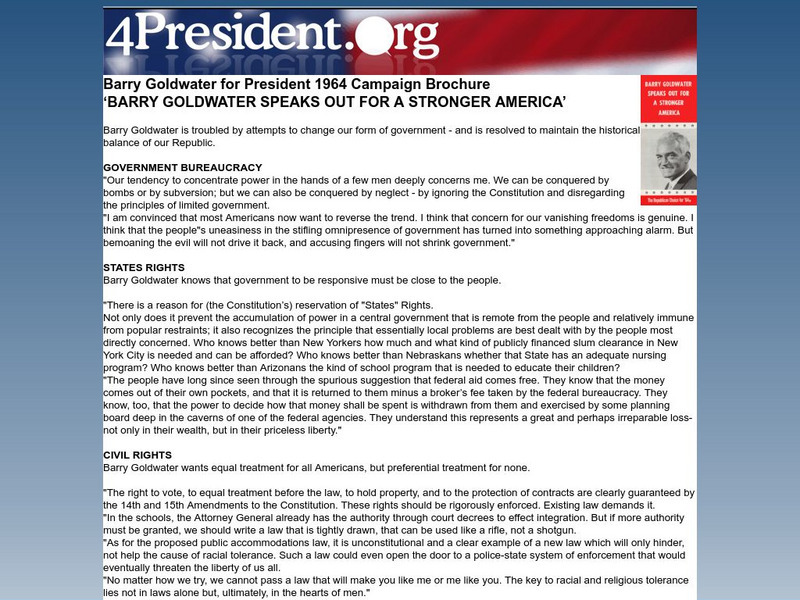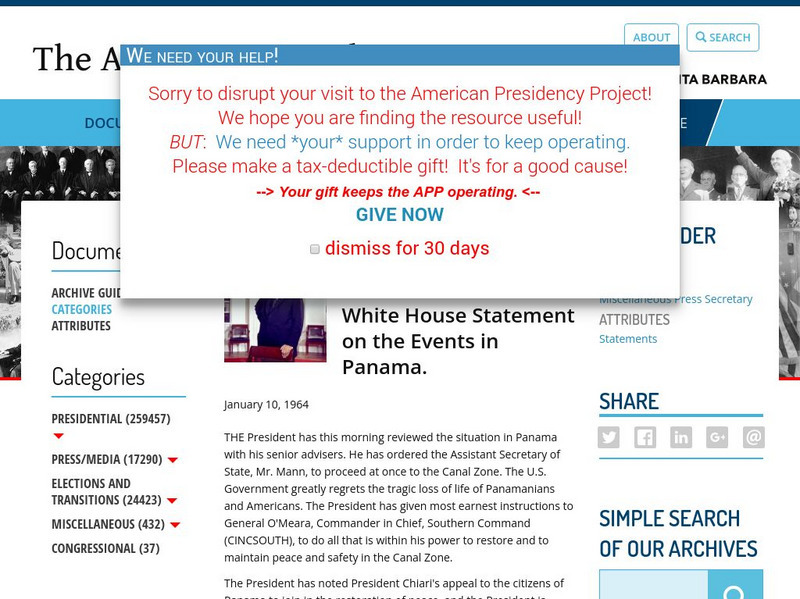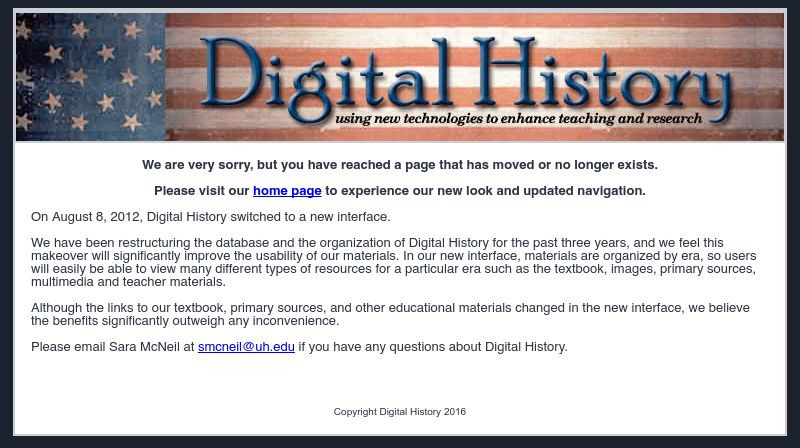Hi, what do you want to do?
Curated OER
President Lyndon Johnson and Defense Secretary Robert Mc Namara in 1964.
NPR considers the incidents and reporting surrounding the Gulf of Tonkin incident forty years after the actual event, a military encounter at sea that escalated U.S. involvement in Vietnam.
Digital History
Digital History: Exit Ngo Dinh Diem and the Gulf of Tonkin Incident [Pdf]
Much information is relayed about the United States' increased involvement in the Vietnam War, beginning with President Kennedy's tacit approval of the military coup in Vietnam in 1963. Read about the incident in the Gulf of Tonkin in...
Other
Fort Hood Sentinel: Texans Who Were Presidents, Vice Presidents
This Sentinel writer tells of personal accounts and connections to the Texas men who had gone on to become President or Vice President of the United States of America.
Digital History
Digital History: The Tet Offensive [Pdf]
Read about the Tet Offensive in the Vietnam War and the resulting escalation of American troops committed to the war. This led to increased American protest against the war, and President Johnson's decision not to run for re-election....
Curated OER
Lyndon Johnson
Lyndon B. Johnson ascended to the presidency after the assassination of President Kennedy in 1963. With a year to go until the election of 1964, LBJ appropriated Kennedy's "New Frontier" and transformed this agenda into his "Great Society."
Smithsonian Institution
National Museum of American History: First Lady for the Environment
This resource provides information about Lady Bird Johnson, wife of President Lyndon Baines Johnson, and the efforts she put forth to preserve the environment. Activities, videos, and book recommendation are included.
American Presidency Project
American Presidency Project: Election of 1964
Online resource that provides detailed data for the presidential election of 1964 won by Democratic candidate, Lyndon B. Johnson.
Other
Presidential Information: Lyndon B. Johnson's Cabinet
Here is a simple chart showing the members of President Lyndon B. Johnson's cabinet.
Other
Barry Goldwater for President 1964 Campaign Brochure
Featured is the 1964 Goldwater for President brochure highlighting the candidate's stance on issues relevant to the campaign.
US National Archives
National Archives: Congress, the Great Society, and Today
Students will study the Great Society and the role Congress played in shaping it. This lesson plan focuses on small group research to draw conclusions on the historical significance of each aspect of The Great Society Congress. Sources...
Discovery Education
Discovery Education: Civil Rights: An Investigation
Through the lesson provided here, students will not only learn about civil rights and civil liberty but also understand the key roles played by President Johnson and Martin Luther King Jr. during the civil rights movement. The detailed...
Library of Congress
Loc: The Civil Rights Era: A Civil Rights Act of 1964 Pamphlet
From the archives of the Library of Congress read the pamphlet that explained the Civil Rights Act of 1964 in plain language. Find out all the different issues the law addressed and what one could do if the law wasn't being followed. A...
Siteseen
Siteseen: American Historama: Voting Rights Act of 1965
The Voting Rights Act of 1965 was enacted to prevent discrimination and protect voting rights. It was signed into law by President Lyndon Johnson on August 6, 1965, to safeguard the right to vote of Black Americans and ban the use of...
Curated OER
American Radio Works: The President Calling
This website looks at Lyndon B. Johnson's use of secretly taped and tapped meetings and telephone conversations, and their role in how he worked as President. Audio of some of the conversations and meetings are included.
Savvas Learning
Pearson Education: Economic Opportunity Act of 1964
Read about the many programs included in the Economic Opportunity Act of 1964, a centerpiece of Lyndon Johnson's War on Poverty. See what happened to many of these programs under subsequent presidents.
Scholastic
Scholastic: Lady Bird Johnson
This is a brief article on Lady Bird Johnson. Read about her life before she became the First Lady of the United States and her career following her husband's presidency.
PBS
Pbs: American Experience: World Timeline (1963 1968)
This website lists several worldwide events for each year that Lyndon B. Johnson was President of the United States.
American Presidency Project
American Presidency Project: White House Statement on the Events in Panama
Here is a statement made by Lyndon B. Johnson on January 10, 1964 concerning the violence in Panama in the Canal Zone.
Stanford University
Mlk and the Global Freedom Struggle: Civil Rights Act of 1964
Read about President John F. Kennedy's role in attempting to outlaw segregation, and, after Kennedy's assassination, President Johnson's role in making that happen with the passage of the Civil Rights Act of 1964.
Yale University
The Tonkin Gulf Incident; 1964
A part of the Yale Avalon Project, this page provides the message from President Johnson to Congress the day after the incident and the joint resolution of Congress on August 7, 1964.
American Public Media
American Radio Works: White House Tapes
American RadioWorks does an overview of the 19th and 20th century Presidents and their use of taping conversations in the Oval Office and on their phones. Copies of some of these tapes are available as well as the audio of an hour long...
Council of Foreign Relations
Counsel on Foreign Relations: Lbj Announces He Will Not Seek Reelection
Video presentation on the impact foreign policy has on a presidency. Using Lyndon B. Johnson as an example, the author of this presentation discusses the political ramifications of an activist foreign policy. Information is provided in...
Independence Hall Association
U.s. History: The Vietnam War
An overview of the Vietnam War, including how the United States became involved, the eventual antiwar movement, and the outcome.
Digital History
Digital History: Civil Rights Act of 1964
A brief description of the Civil Rights Act of 1964, the opposition against it, and how the law prohibited discrimination in voting, housing, public facilities, and employment.




















